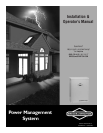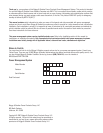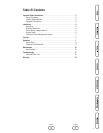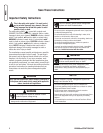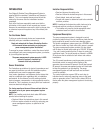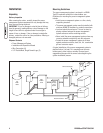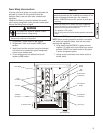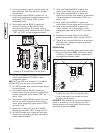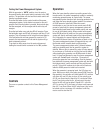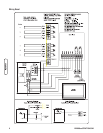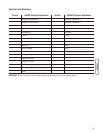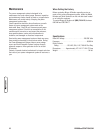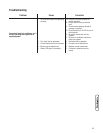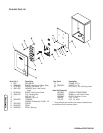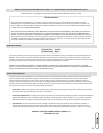
3
Introduction
Your Briggs & Stratton Power Management System is
supplied with this combined “Installation and Operator’s
Manual”. This is an important document and should be
retained by the owner after the installation has been
completed.
Every effort has been expended to make sure that the
information in this manual is both accurate and current.
However, the manufacturer reserves the right to change, alter
or otherwise improve the system at any time without prior
notice.
For the Home Owner
To help you make informed choices and communicate
effectively with your installation contractor(s),
Read and understand the Owner Orientation Section
of this manual before contracting or starting your
power management system installation.
To arrange for proper installation, contact the store at which
you purchased your power management system, your dealer,
or your utility power provider.
The power management system warranty is VOID
unless the system is installed by a
licensed electrical professional.
Owner Orientation
The illustrations provided are for typical circumstances and
are meant to familiarize you with the installation options
available with your power management system.
Local codes, appearance, and distances are the factors that
must be considered when negotiating with an installation
professional. As the distance from the existing electrical
service increases, compensation in wiring materials must be
allowed for. This is necessary to comply with local codes and
overcome electrical voltage drops.
The factors mentioned above will have a direct effect on
the overall price of your power management system
installation.
NOTE: Your installer must check local codes AND obtain
permits before installing the system.
• Read and follow the instructions given in this manual.
• Follow a regular schedule in caring for and using your
power management system, as specified in this
manual.
Installer Responsibilities
• Read and observe the safety rules.
• Read and follow the instructions given in this manual.
• Check federal, state and local codes.
• Consult with owner to determine loads to be controlled
and their priorities.
NOTE: A worksheet for determining which loads are to be
transferred and their priorities is provided on page 9.
• The installer may need to provide appropriate rated
contactors based on loads to be controlled.
Equipment Description
The power management system is designed to control
six priority loads and up to two air conditioner loads that are
being supplied by power from the home standby system.
This power management system goes into a STANDBY mode
and does not control any loads when utility power is present.
The power management system consists of a relay board
with 6 relays to control loads rated up to 120 VAC, 20 Amps,
1 hp, and a control module that has 2 relays for central air
conditioner loads. The circuit boards are housed in a NEMA
3R enclosure that is suitable for both indoor and outdoor
installations.
Two (2) current transformers monitor generator current at
the transfer switch to ensure that the loading of the
generator does not exceed 85 percent. Should load exceed
85 percent, the power management system will shed loads
to keep the generator from overloading. The power
management system will add load back once sufficient
current is available.
The control module has a green LED for each relay to
indicate when the relays are supplying power to the loads
when on generator power. There is also a status LED that
flashes when the power management system is functioning
properly.



